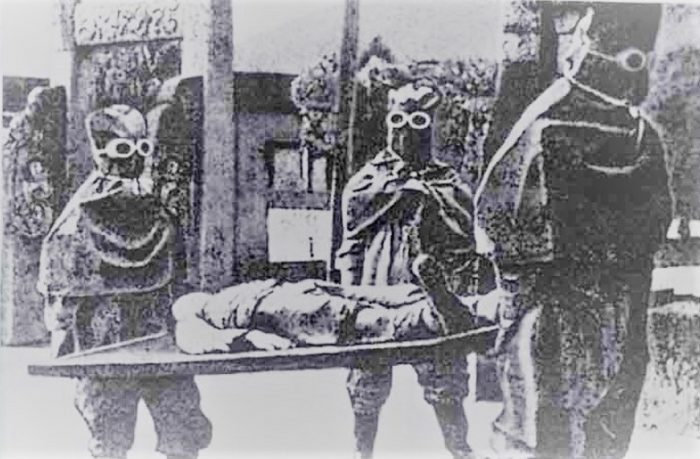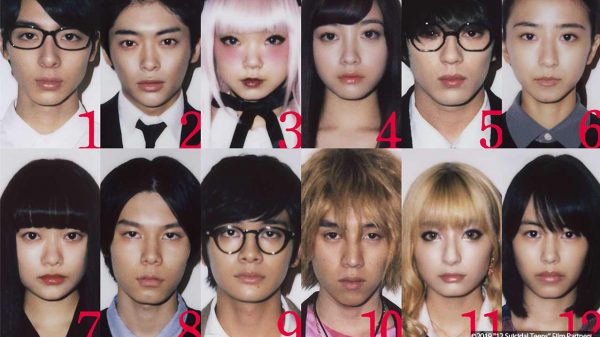Looking back and remembering the second world war, it’s hard to believe that such a conflict of mythic proportions had taken place. In a sense, it has a romantic way about it, with the allied forces coming together to put down the rise of the fascist Axis regimes that had festered within Europe and Asia, with the field of battle encompassing almost the entirety of the world.
Especially in today’s society, to have an enemy so clear cut and visible as the Nazi regime feels unreal, in comparison to the hall of mirrors we inhabit today. It feels less like history, and more like legend. But like a legend, some things come to take precedence over others, sometimes overshadowing critical aspects.
In the case of World War 2, Hitler has come to not only symbolize the Axis forces, but especially in light of recent surges of far right movements in America and Europe, has become the poster boy for a real world evil. And as crucial as it is to remember what Adolf Hitler and the Nazi regime inflicted on the world, countless atrocities have been obscured or lost altogether in the fog of war and secrecy. One of the most infamous and long concealed of these has been a scar along the face of Japan that, despite efforts, will never diminish, and continues to have an effect on Japanese – Chinese relations to this day.

(Above, Unit 731 Scientists)
Unit 731 was a product of the second Sino – Japanese war, which sparked into savage warfare before the Second World War had even started, and which resulted in a ruthless Japanese invasion of China. Officially designated as the ‘Epidemic Prevention and Water Purification
Department’ of the Japanese in occupied China, what came to be known as Unit 731 was always meant for the development and research into new and ever more lethal biological weaponry. Headed by a field medic who had risen in the ranks, General Shiro Ishii, the base, which was funded and supplied by the Japanese government, was not only a place where the
imaginations of debased scientists from distinguished schools and academies held free reign to test their perverse hypothesis, but it was located in a land populated with limitless subjects with which to harvest.
The Japanese persecution of the Chinese population was notoriously
monstrous, easily matching the Nazi’s treatment of the Jews. The Chinese were utterly dehumanized, referred to as ‘maruta’ (wooden logs), as though they were but another resource to be reaped, giving the facility its other cover up as, ‘The Lumbermill’. Subjects made up of Chinese, and later Korean and Soviet POW’s, were used as living petri dishes for gestating diseases, so that the Japanese doctors could observe the effects of various
viral infections. Men, women, and children, all systematically made sick with anthrax, typhoid, dysentery, cholera, and bubonic plague, only to be vivisected on operating tables, often times bereft of any anesthesia. Some of the female prisoners were even made pregnant, for the purpose of examining how a mother might pass a disease on to her developing child in utero.
Through these unthinkable experiments, Ishii and his men were able to develop groundbreaking leaps in germ warfare. Chinese townships would prove as testing grounds for plague infused fleas, which were disseminated via airplanes that would drop ceramic pots ripe with the parasites. These various outbreaks have had consequences up to modern day, turning
otherwise healthy and harmonious villages into points of concentration for disease.

(Above, Experiments Underway)
Though it was undoubtedly the focus of Unit 731, germs and disease were only one aspect of the research conducted. Experiments regarding environmental effects on the human body were also exercised. Prisoners were grouped and put out in the harsh cold of the winter months as
they froze to death or developed frostbite. Others were placed in airtight chambers and subjected to increasing levels of pressure until their insides were pushed out of every orifice.
The more one learns of the startlingly varied and bizarre modes of torture the Japanese implemented, it seems less like research and more like a deformed, childish curiosity let loose without any real boundaries. Every death, every torment, though, was relegated to data on paper, turning hell into statistics. Unit 731 is an example of how history is sometimes stranger
than fiction, or rather, more horrific.

(Above, Vivisection)
As time has gone by, and speaking from a North American perspective, it is easy to forget that the second Sino – Japanese war, and with it Unit 731, predated the outbreak of the war by several years. But by the time Hitler marched into Poland and the world stage was set alight, the majority of attention was on Germany, which has resulted in the horrors of Unit 731 being largely forgotten or effectively disregarded over the many years by much of the world, to the benefit of both the Japanese and American government.
For some, wartime excavates the primitive recesses of the human psyche, turning men into monsters, while in others it emboldens a harsh logic that is able to discount the human element. When the Japanese surrendered at the end of the war, the latter was exhibited in US General Douglas MacArthur, who struck a deal with with Ishii, allowing the top brass behind Unit 731 to escape reprimand for their heinous crimes against humanity in return for the data they had collected, giving further credence that ‘justice’ is nothing but a human conceit.

(Above, Shiro Ishii)
Due to the efforts of protests and public outcry, the truth of Unit 731 has been pulled back into the light for future generations to recognize and remember. As is fitting given the subject matter, the 1988 Chinese horror film, “The Men Behind The Sun”, ventured to adapt the story of Shiro
Ishii and Unit 731, and has since become infamous as one of the most disturbing films ever made. And yet, even though the film sports many stomach churning scenes of torture and surgical depravity, what remains the most disgusting factor of all is that they aren’t merely the dark imaginings of some exploitation filmmaker, but rather, founded on historical fact.












